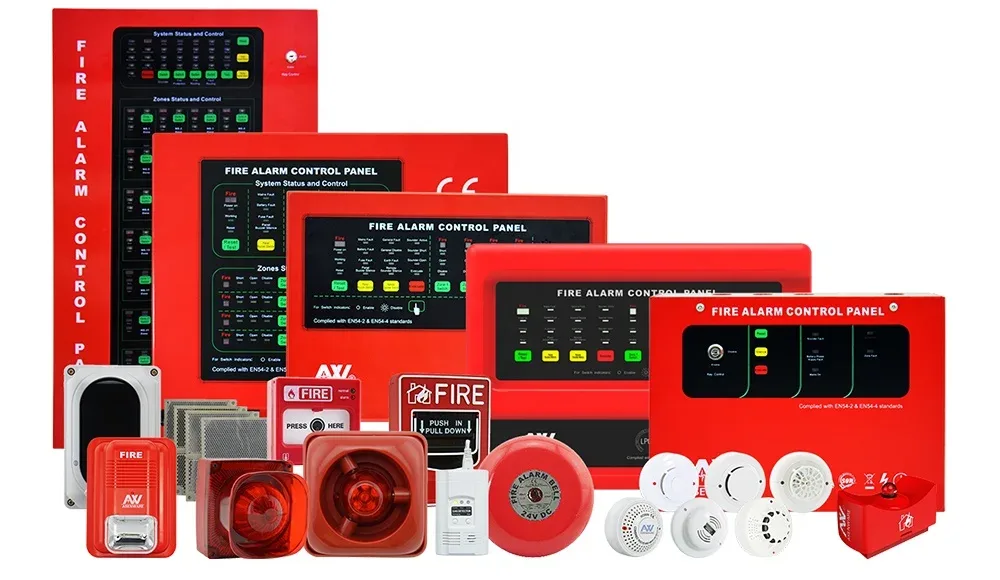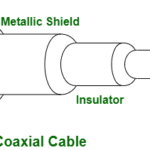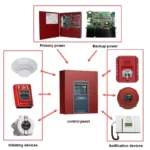The fire alarm system is a network of interconnected devices designed to detect and warn people about fire, smoke, flames, and heat in a building. Its primary purpose is to provide early notification of a fire emergency, allowing individuals to evacuate the premises and emergency responders to be alerted. It’s important to note that fire alarm systems vary in complexity and can be tailored to the specific needs of different buildings, such as residential homes, commercial offices, or industrial facilities. Following local building codes and regulations when installing and maintaining fire alarm systems is crucial to ensuring they effectively protect life and property during a fire.
Types Of Fire Alarm Systems
There are two types of fire alarm systems based on their working principles.
-
Conventional Fire Alarm System
This type of system divides the building into zones, and each zone is connected to a specific circuit on the control panel. When a detector in a zone is activated, the control panel indicates the general area of the fire, but it does not provide specific information about the exact location of the fire; it will just indicate the zone where the detector was activated. This is the simplest type of fire detection system.
Ideal uses for conventional fire alarms include:
- Small Schools
- Stores
- Restaurants
- Apartments
Connections
A conventional fire alarm system uses one or more circuits connected to sensors wired in parallel. Each device is connected to the control panel with a wire. You will find one end of the wire connected to the device and another to the control panel, with an end-of-line resistor at the last device. The main advantage of conventional fire alarm systems is that they are cost-effective for smaller applications.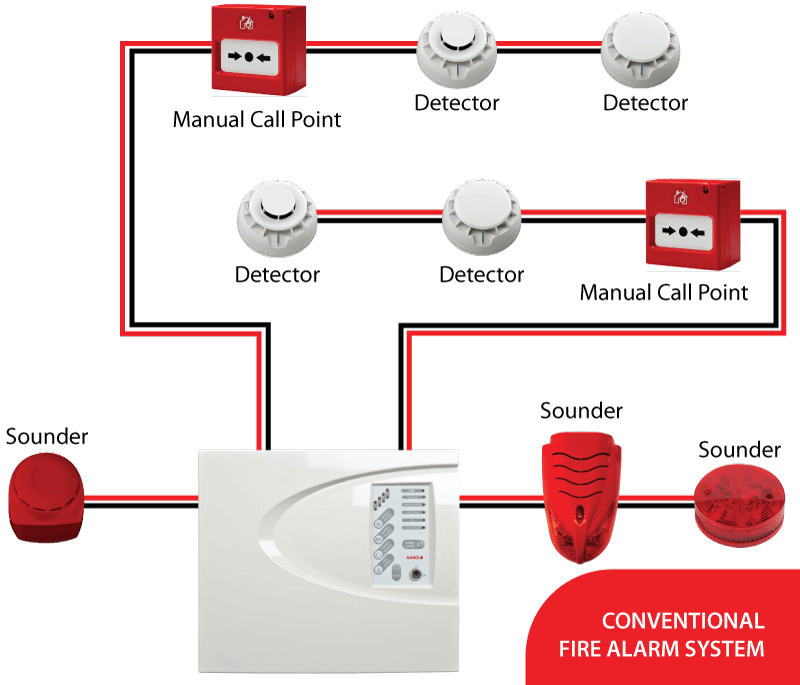
2. Addressable Fire Alarm System
An addressable fire alarm system uses sophisticated technology to pinpoint a fire’s exact location. Every device is connected and communicates continuously with each other and a central monitoring station. They use digital signals to transfer vital information such as system health, device type, location, smoke density, etc. Addressable fire alarm systems consist of devices such as detectors, call points, and sounders.SimplyTwo two types of addressing are available
- hard addressing: each device uses a numerical binary code tag or switch;
- Soft addressing: the software used to operate the system allocates a unique number to each device in the order that they are wired to the panel. from the panel itself.
Addressable fire alarm systems are designed using a loop configuration. These loop circuits, called signalling line circuits (SLC), can support numerous initiating devices and notification appliances. Over 200 devices can be attached to a single loop, with complex systems utilising multiple SLC loops.
Each component in an addressable fire alarm loop has its own electronic address or serial number assigned to it so that malfunctions can be identified quickly and precisely. When an attached device activates, the unique code displays on the panel, helping to determine where the device is located.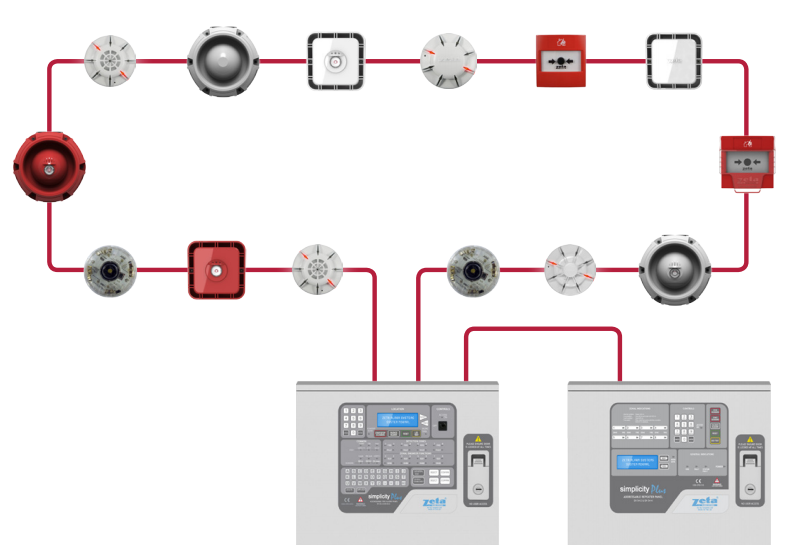
Frequently Asked Questions
- Are addressable alarm systems better than conventional systems?
Each has its advantages and disadvantages, depending on the specific requirements and preferences of the user. Here’s a comparison of both systems:
Conventional Alarm Systems:
Wiring: Conventional systems use a simpler wiring configuration, with each device connected to the control panel through separate circuits or zones.
Cost: less expensive to install.
Zone Identification: It is challenging to identify the specific device or location where an alarm is triggered.
Addressable Alarm Systems:
Wiring: Addressable systems use a loop configuration where each device has a unique address, allowing them to be individually identified and controlled over a single pair of wires. This makes installation easier and more flexible.
Scalability: A larger number of devices on a single loop makes them suitable for larger or more complex installations.
Monitoring and Control: provide detailed information about the status and condition of each device. This can simplify troubleshooting and reduce response times in the event of an alarm. Ultimately, the choice between addressable and conventional alarm systems depends on factors such as the size and complexity of the installation, budget, desired level of control and monitoring, and specific needs of the user.
What is PA in a fire alarm system?
In the context of a fire alarm system, “PA” stands for public address. A public address system is a feature that is sometimes integrated into fire alarm systems to provide audible announcements or messages to occupants during an emergency.
What is a fire drill alarm?
During a fire drill, the fire alarm system is activated to initiate the evacuation process. The purpose of the fire drill alarm is to train and educate individuals on how to respond to a fire or emergency. It helps occupants become familiar with the sound of the alarm, understand the evacuation procedures, and practice moving quickly and safely to designated assembly points or exit routes.
What are the Basic Parts of a Fire Alarm System?
- Fire alarm control panel
- Initiating devices, Smoke Detectors, Heat Detectors.
- Notification devices
- Primary power supply
- Call Points
- Monitoring & Communication Devices

